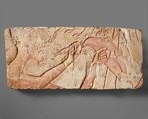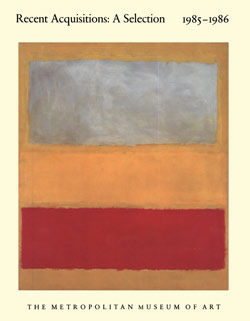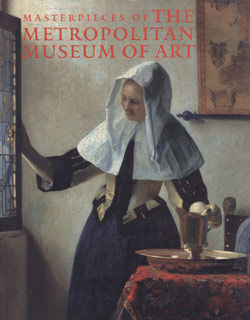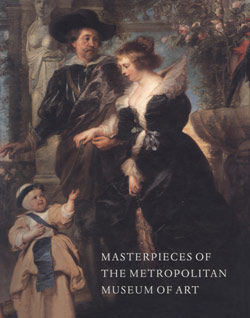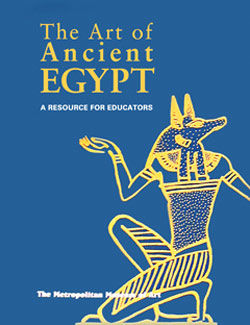Akhenaten Sacrificing a Duck
New Kingdom, Amarna Period
The pharaoh Akhenaten believed that light was the only divine power in the universe and that the solar disk was the means through which this power came into the world. Akhenaten's god, the Aten, is portrayed through the symbol of a solar disk with rays ending in small human hands. This Aten symbol serves as a large-scale hieroglyph meaning "light." In representations of Akhenaten, one of these hands holds an ankh hieroglyph, the symbol of life, to his nose.
On this block from a temple relief, Akhenaten, recognizable by his elongated features, holds a duck toward the Aten. With one hand he wrings the bird's neck before offering it to the god. Although early depictions of Akhenaten often appear strangely exaggerated, later in his reign sculptors attempted a more naturalistic style, emphasizing a sense of space and movement. Akhenaten's hands here are grasping and straining to hold the struggling duck. Such a scene, capturing a single moment, would never have been attempted in an earlier period. However, Akhenaten's right hand is twisted so that all five fingers can be seen, a pose that conforms to the Egyptian convention of presenting each part of the body as completely as possible. To the lower right appear the webbed feet of a second duck.
In this relief, the artist has cut the outlines of the figures into the surface in a technique called sunk relief. Sunk relief appears mostly on the exterior of buildings, where the outlines cast shadows, emphasizing the sunlight. During the Amarna period almost all relief was executed in this technique.
#3440. Akhenaten Sacrificing a Duck
Due to rights restrictions, this image cannot be enlarged, viewed at full screen, or downloaded.
This artwork is meant to be viewed from right to left. Scroll left to view more.
